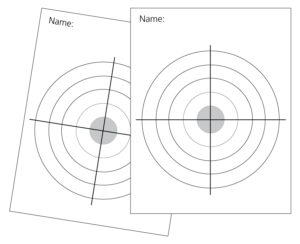Hints:
- The self and external analysis presupposes a great deal of confidence in the group and demands of the teacher an ability to deal with sensitive issues. It is useful to previously discuss and illustrate with examples in which areas people may have strengths (social competences, strengths in school, character strengths, etc.). This exercise may also be conducted with gender-specific teams, whereby subsequently the strengths of girls and boys may be compared and discussed.
- Sources: Methodensammlung Lernort Stadion. Politische Bildung an Lernzentren in Fussballstadien. Robert Bosch Stiftung in Zusammenarbeit mit Bundesliga Stiftung. Kapitel 3: Identität. Link: http://www.bosch-stiftung.de/content/language1/downloads/Methodensammlung_mit_Lernkarten.pdf (Collection of methods, place of learning, football stadium. Robert Bosch Foundation in collaboration with the German major league soccer foundation. Chapter 3: identity, see link above)
Procedure:
- Working in pairs: each student receives two sheets of paper with a target. They put their own name on one sheet, and the name of another child on the other sheet.

- First, the students list on their own target page five personal strengths. The more important they consider a particular strength, the more closely it is entered to the center of target.
- They then repeat the same exercise in reference to their partner. Subsequently, they compare the results with one another.
- Reflection and discussion with the whole class: how did you experience this exercise? Were there great differences between your own awareness and the perception of your partner? What constitutes a strength, actually? Is there anything you can do for your own strengths? Could weaknesses actually become strengths?
- The evaluation should be focused first and foremost on the diversity of the differing strengths and potentials, and secondly on dealing with the question “Which weaknesses do we want to overcome and, in doing so, what kind of support do we need ?






